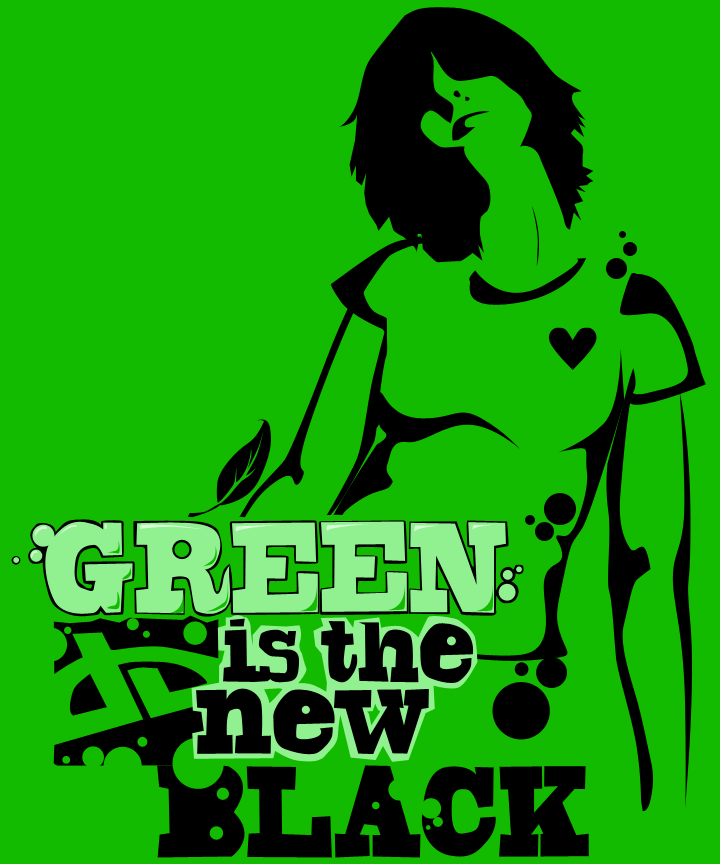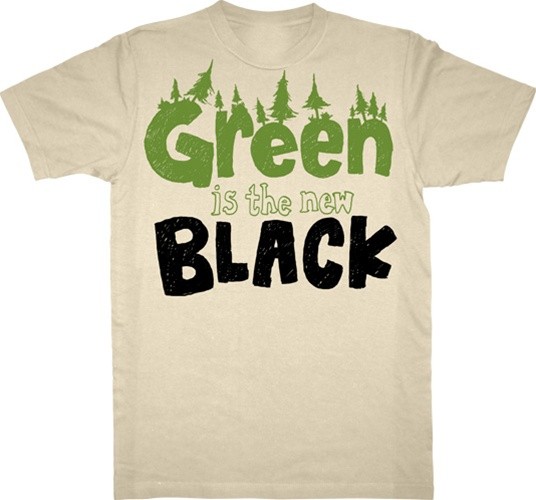Green is the New Black
Post on: 16 Март, 2015 No Comment

Selfies. hashtags, and Priuses (or is it Prii ?). What do these 3 things have in common? They all have been or still are trends.
Growing up in the Bay Area, I’ve seen first hand how going green – biking, composting, recycling, etc. – can be just as trendy as crop tops and iPhones. Now as a student at UC Berkeley, I’ve also seen the growing demand for organic food and fair-traded products. among other things; many people flock to buy these products though they remain relatively expensive. But are these products trendy because they are expensive or are they expensive because they are trendy?
It should be noted that the main reason these products remain so expensive is because of their quality. Organic food costs more to produce and fair-traded products pay local farmers a higher fee, which is then passed on to the consumer. That being said, there are also examples of inflation, such as when Whole Foods artificially inflated prices for a wide variety of items .
While many people choose to buy organic, fair trade, and other green products for the obvious environmental. health, and social reasons, the less stated truth is that many people also do it to look good. Social justice is itself a trend – just look at the rise of “sadvertising .” A study by Iman Naderi and David Stratton of Fairfield University in Connecticut found that narcissists tend to buy green products when they see it as beneficial to their image. For example, narcissists were more likely to buy a green laptop than a green desktop because the green laptop is visible to their audience.” Moreover, they found that narcissists were also more likely to invest in a green product if it was more expensive than the regular alternative:
And the more expensive the backpack, the stronger the signal you can send that they’re doing something socially desirable. So there are three rules if you want to sell pro-green stuff to [a] narcissist. Sell the products in public. Make sure the products can be used in public. And make sure you mark up the price.
It seems the answer to the question, then, is that it’s probably a little bit of both. Sustainable products are initially more expensive because of the cost of production, but prices may be artificially inflated to capitalize on hype.
Though this trend of sustainability is a good thing, it’s plausible that high prices could keep many Americans from taking part. Is it possible to live sustainably without necessarily buying organic, fair trade, and/or other green products? It is, and in fact many of the necessary changes can take place without changing where you shop or how much you spend.
Affordable sustainability is possible in our favorite fast food restaurants. Dunkin’ Donuts recently announced its goal to use only 100% sustainable palm oil in making its donuts. Harvested mainly in Asia, palm oil production is a source of serious deforestation in Malaysia and Indonesia, threatening wildlife and leading to the release of carbon into the atmosphere. While it will be hard to lessen the use of palm oil – which appears in many things, from Oreos to laundry detergent – trying to find sustainable alternatives is a way to start. Moreover, making sustainable changes like this in products that are more financially accessible to a wide array of people will garner the biggest impact.
For those interested in fair trade, Starbucks has committed itself to selling fair-trade coffee; while this may not save many people money, it is saving socially conscious consumers from a change in routine .

The most important change, however, has nothing to do with which products we buy—whether fast food, organic, or fair trade—but how we utilize them. Food waste not only has an effect on climate change. but also on hunger. With the US, China and India collectively throwing out enough food each year to feed over 400 million people. about a third of all food grown around the world never getting eaten, and Americans alone wasting up to about 1,200 calories per person each day, many are pushing for more efficient consumption and disposal around the world.
In France, the grocery chain Intermarché started a campaign called “les fruits et legumes moches, ” or “the inglorious fruits and vegetables.” Food waste is partly caused by discarding of “ugly” produce (pretty fruit is trendy too); the campaign, which marks produce down 30 percent along with some advertising, works to reverse this. If something similar were introduced in the US, the impact could be significant.
But it’s not just about what foods we buy; it’s also which ones we choose to dispose of. A study recently published in the journal Science found that not all calories are created equal, particularly when you take into account how each affects the global food chain. Discarding a pound of boneless beef, for example, effectively wastes 24 times more calories than discarding a pound of wheat because the beef also contains the calories in the corn that fed the cow. When it comes to addressing hunger, ecologist Paul West concludes:
At least in terms of calories per person, cutting food waste is more of an immediate opportunity to feed more people than increasing crop yields around the world.
Sometimes the most sustainable actions can be the most affordable. It’s up to us to make them trendy, too.














